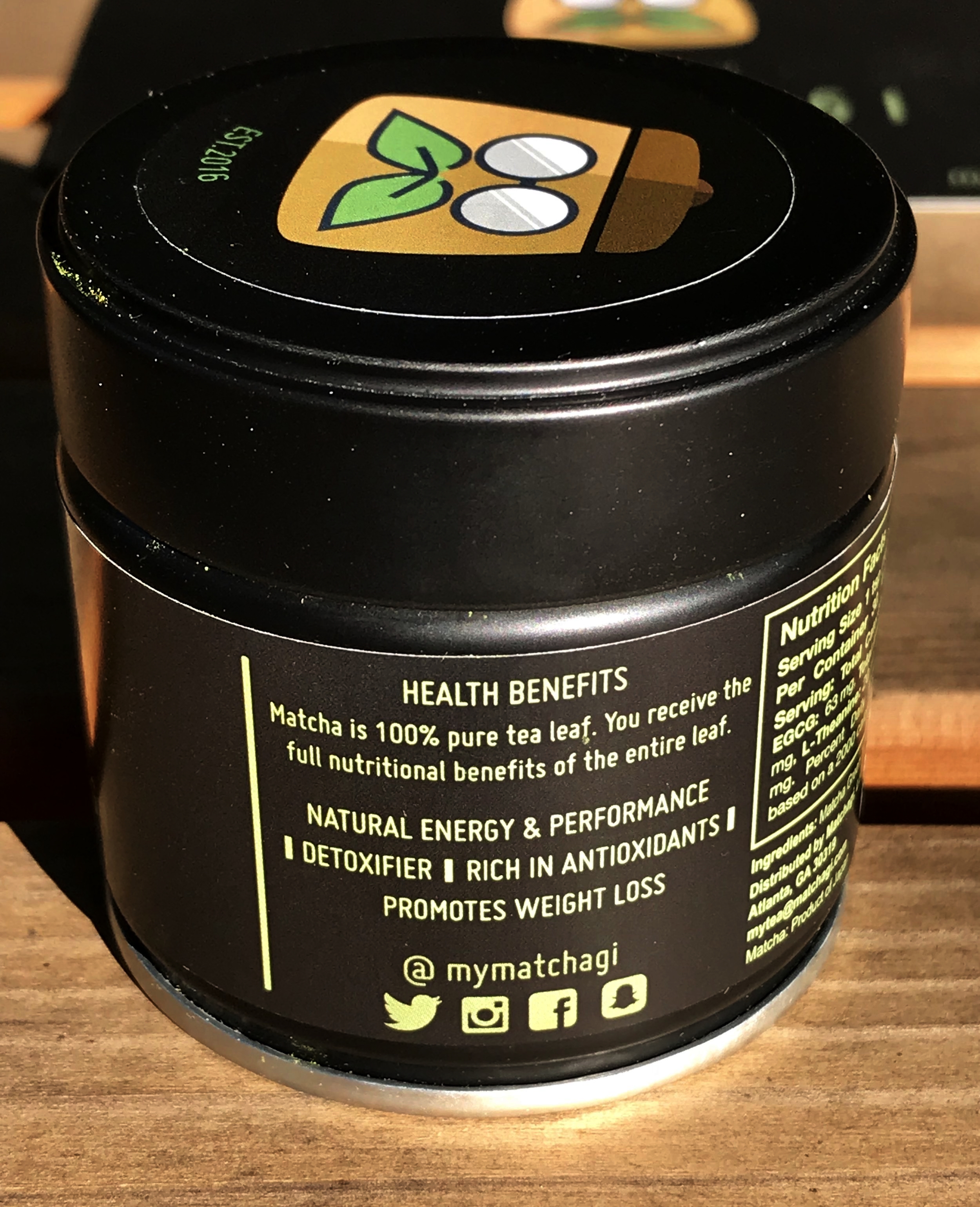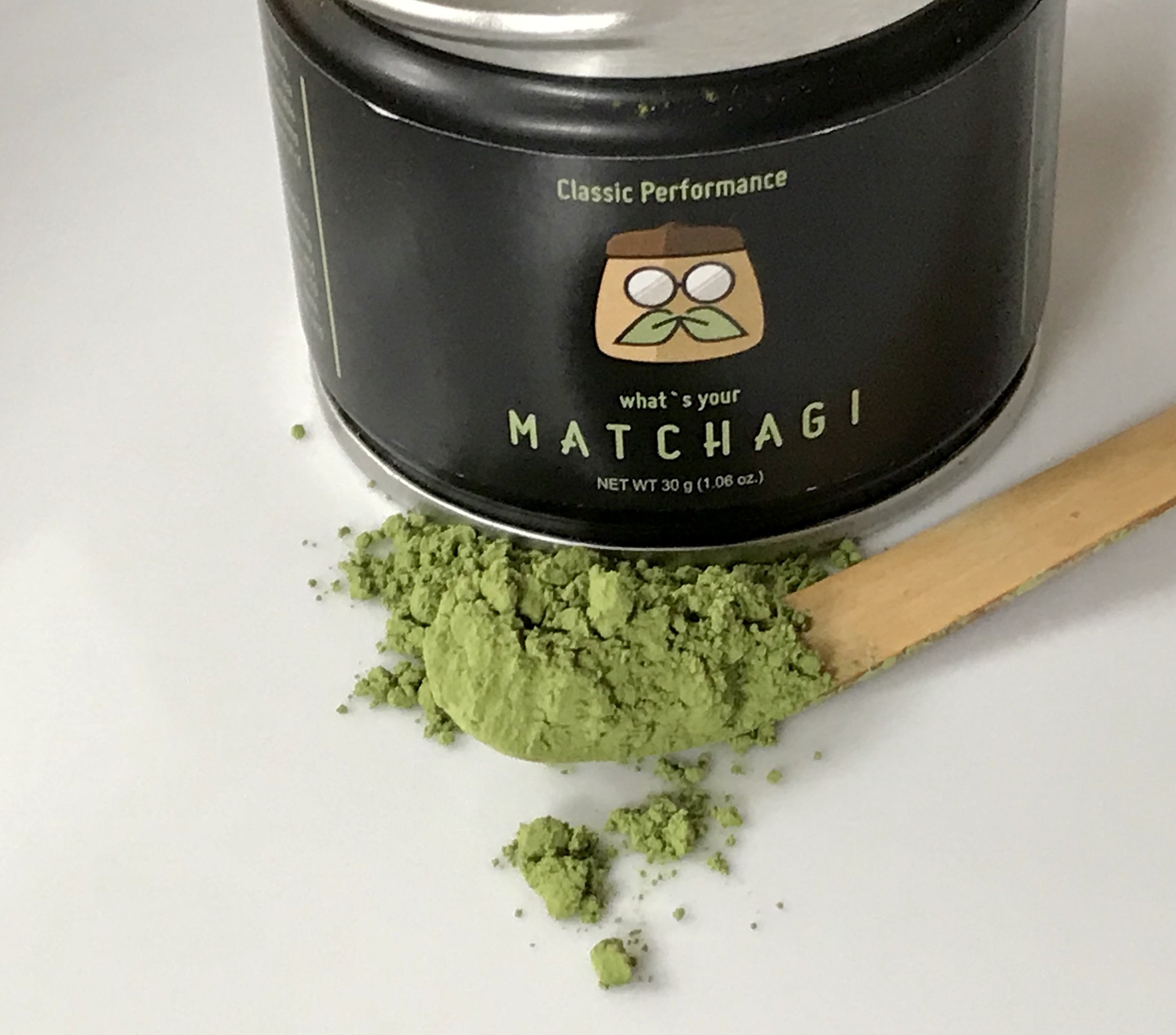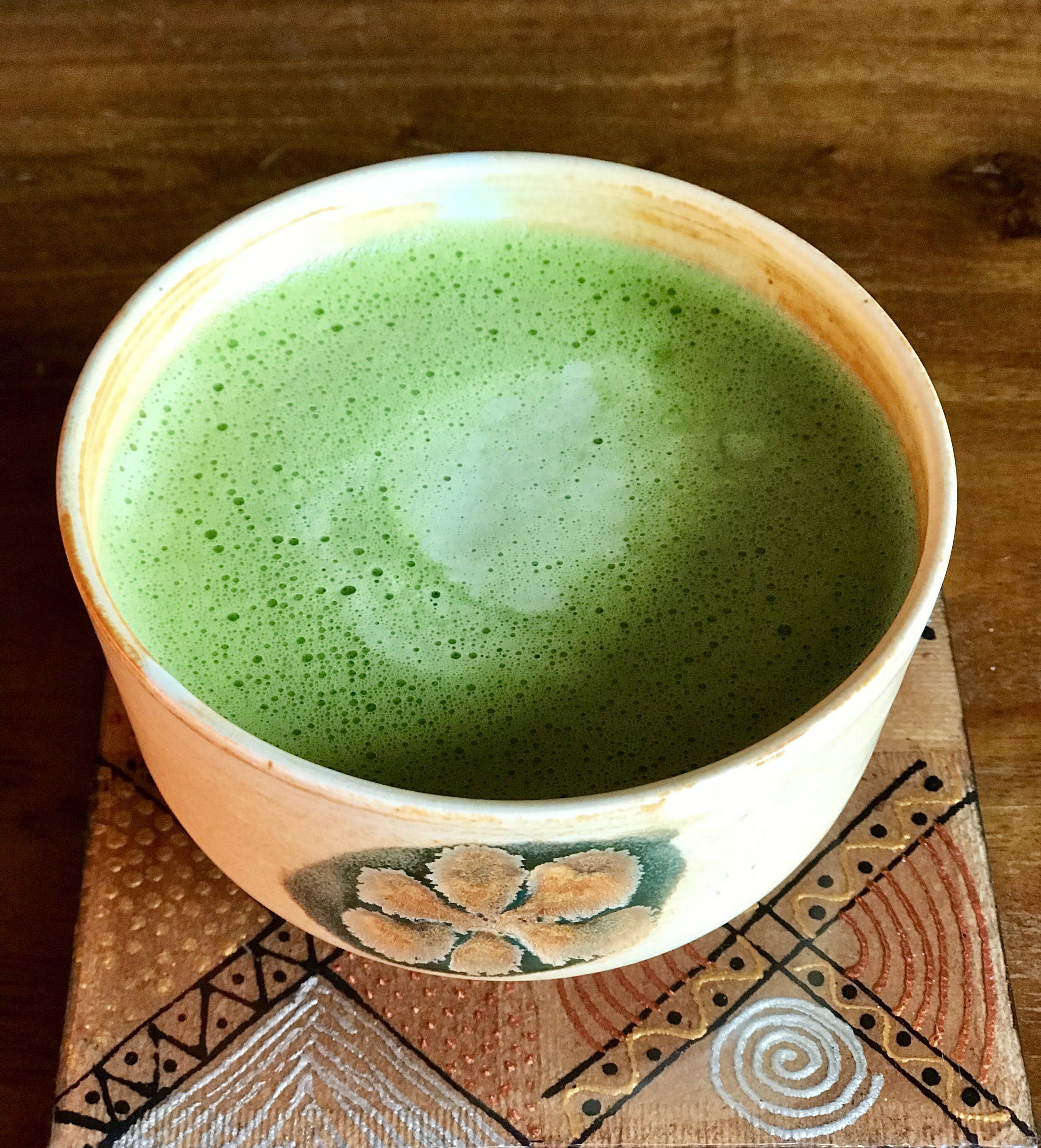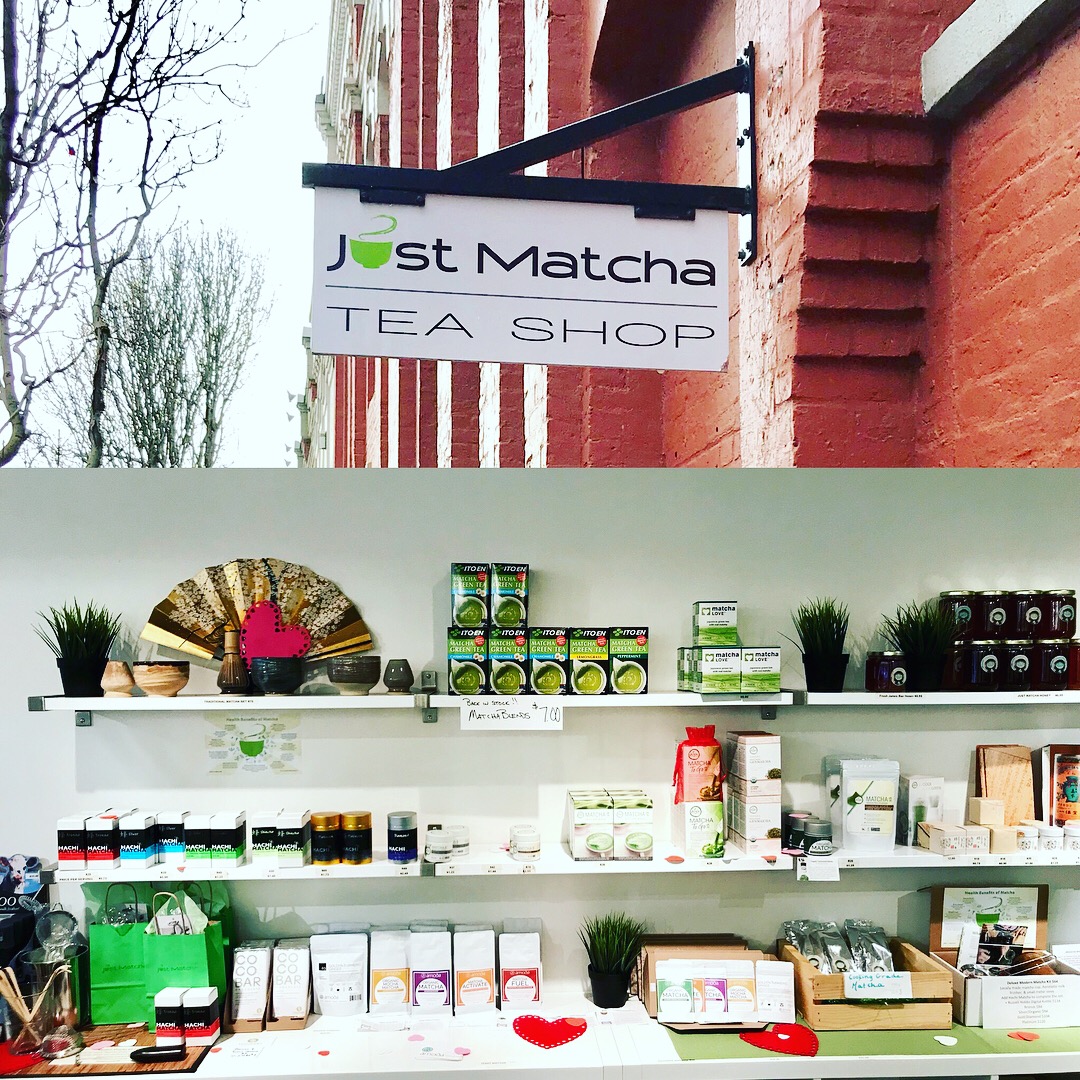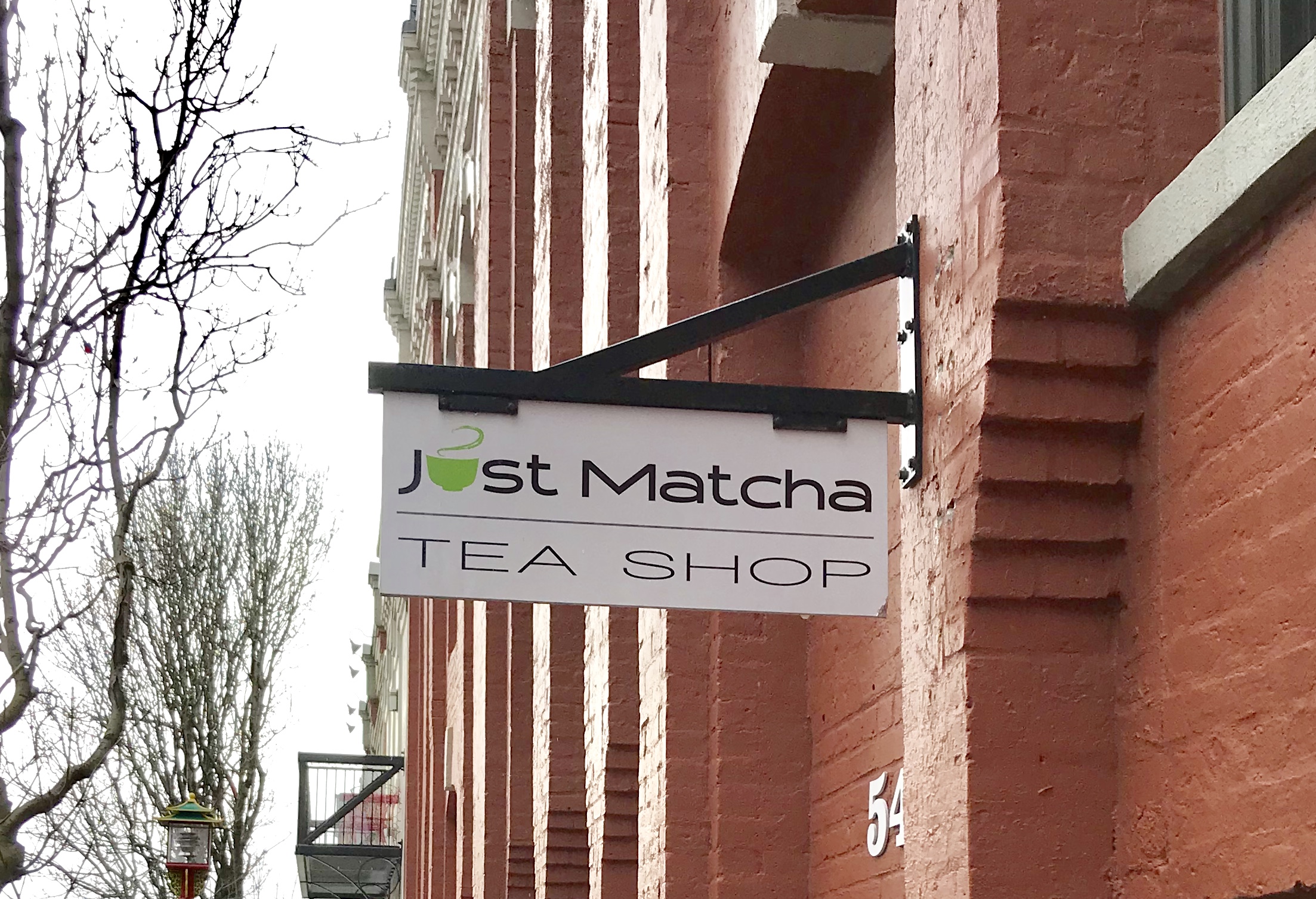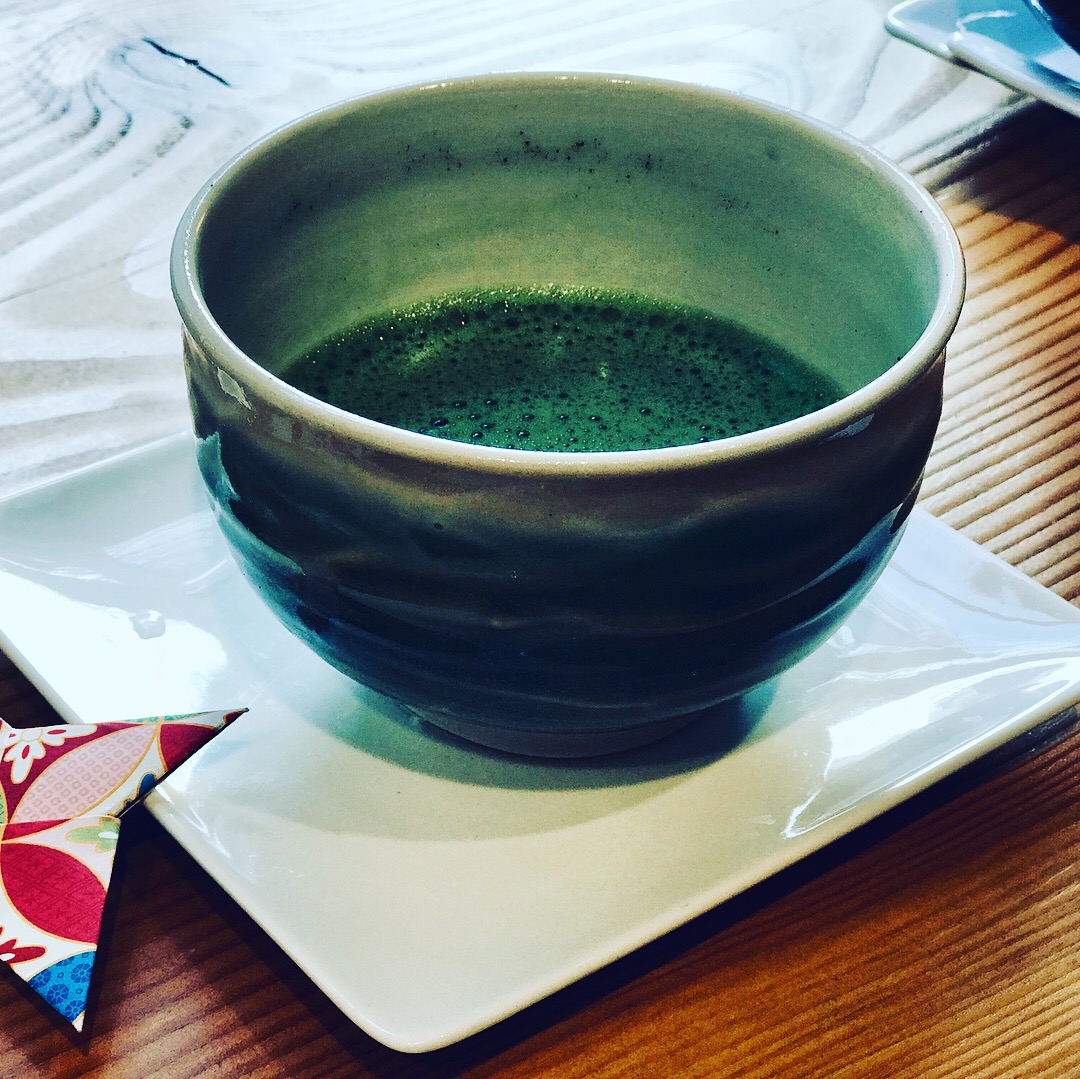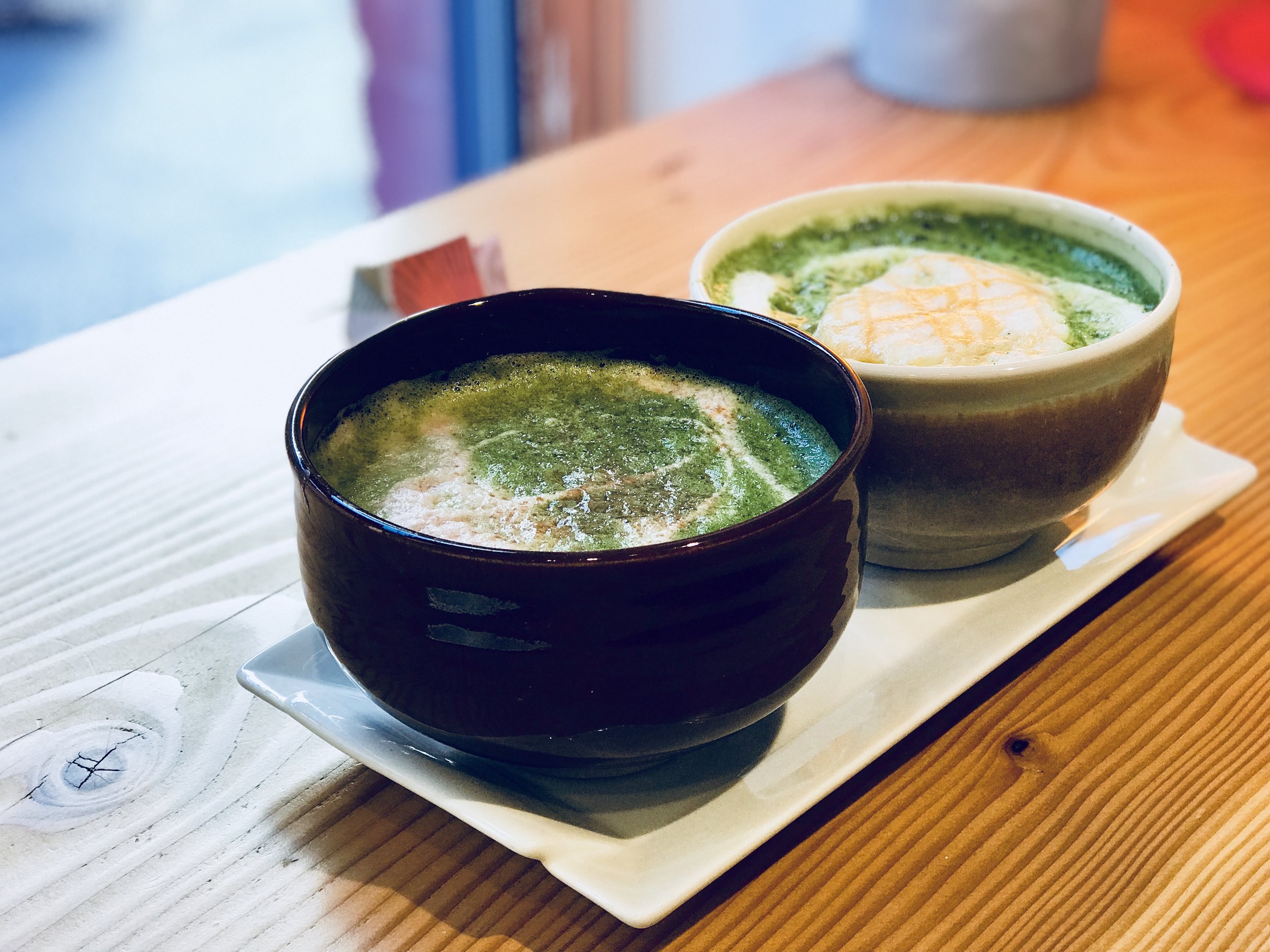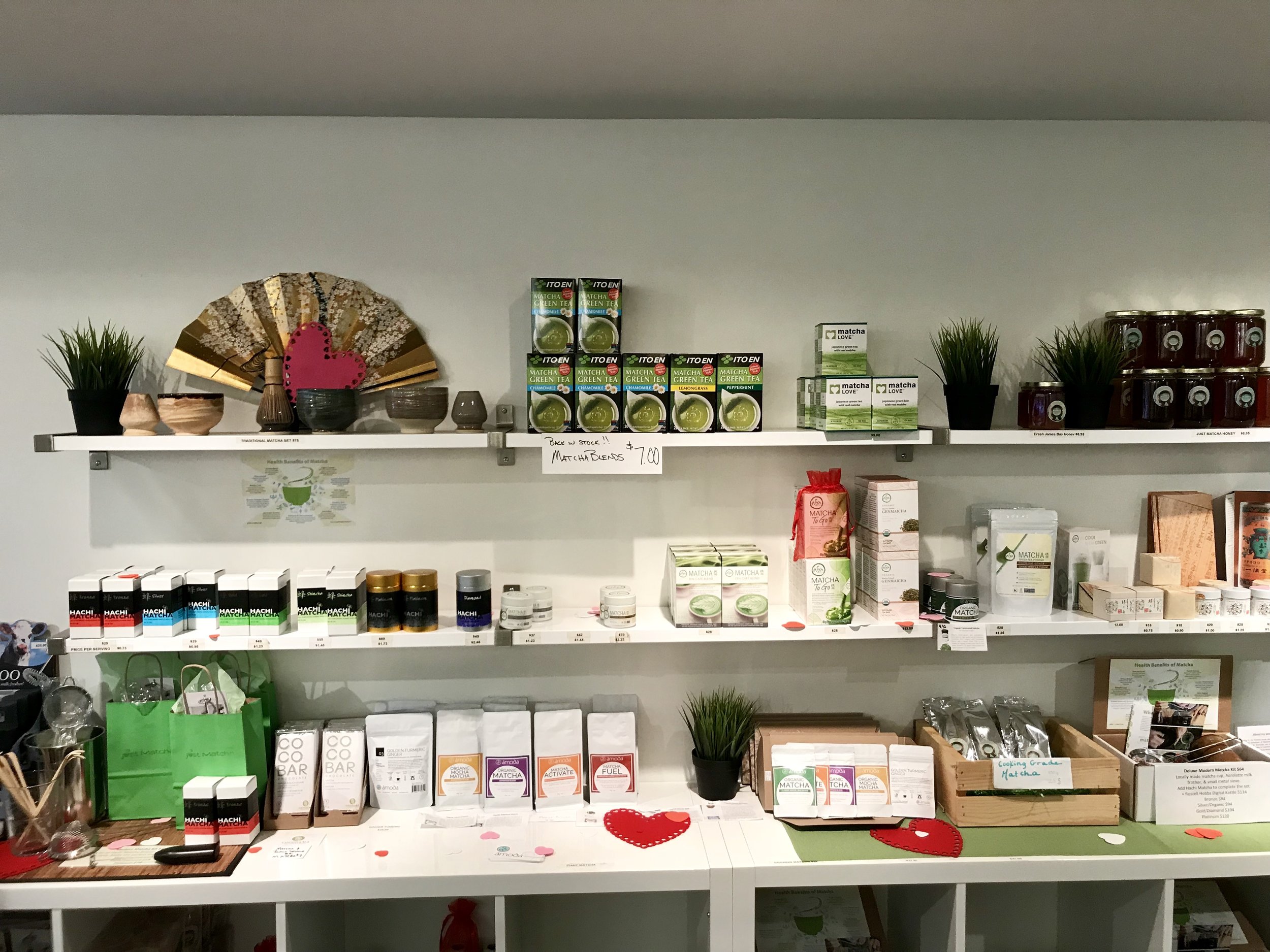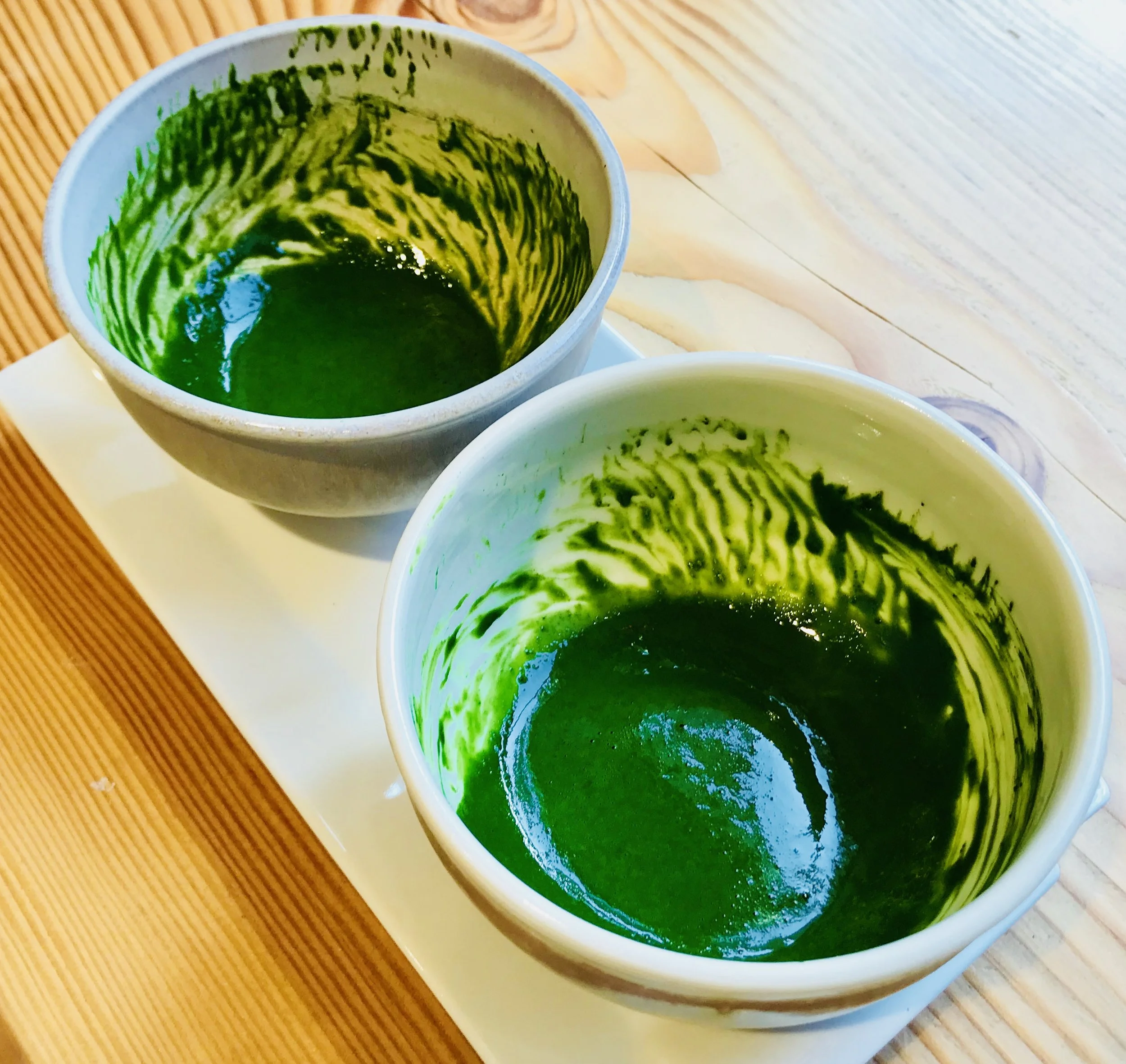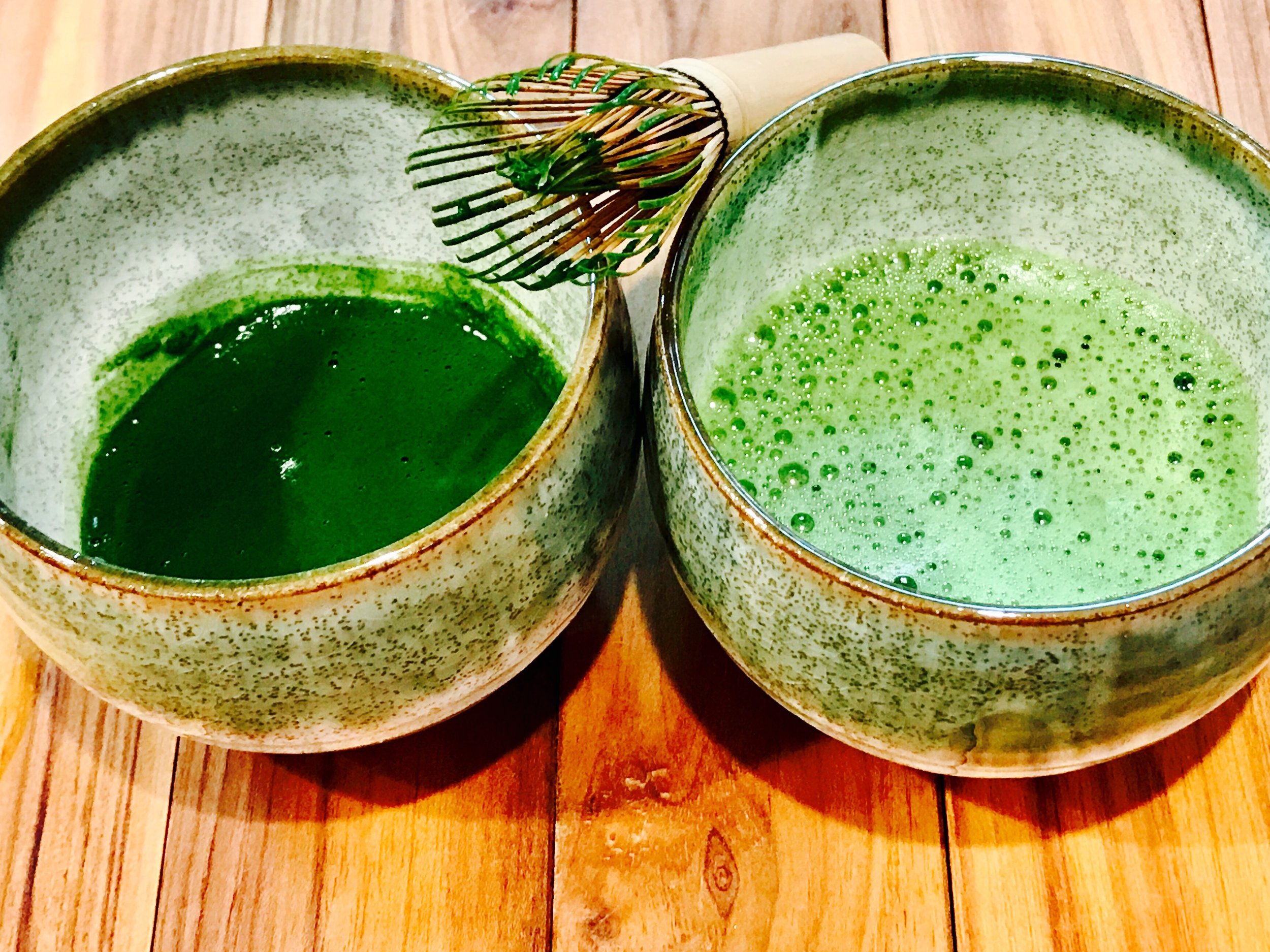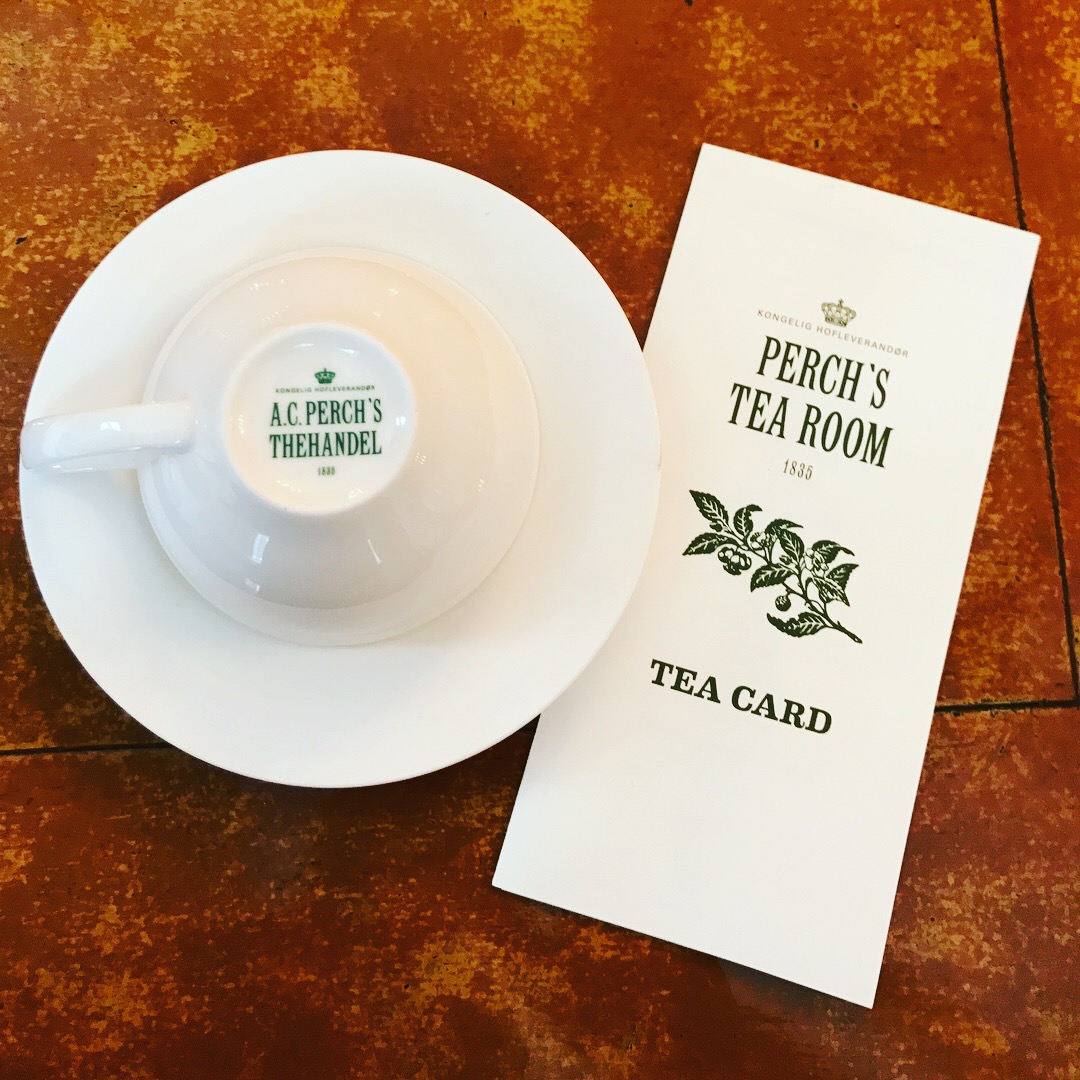
What is your gi? Follow your passion with Matchagi
What is your Gi?
What is your passion?
What wakes you up every morning?
Hello! My name is Brad and I have a passion for meditation and matcha.
Those questions above are the focus of one of my newest finds - Matchagi based out of Atlanta. Formed two years ago, Matchagi has the goal of helping others find and fuel their passions through the power of matcha. This week I had the chance to speak with one of the co-founders, Cal Supik, who shared with me the meaning behind the name. A gi refers to the uniform worn in karate and other martial arts disciplines. He describes the serious practitioner who wakes every morning to don their respective uniforms, their respective passions, their respective gi. Each of us have our own gi we wear, and Matchagi wants to help each of us cultivate that passion.
About two years ago, Cal was working as a developer for a large company and trying to find energy anywhere he could. Having been a college athlete, he was familiar with many of the sports and energy drinks, yet he wasn't interested in all the "extra" ingredients. There was never enough time in the day, or enough Red Bulls to drink, to keep going. He wanted something different. When his future business partner, Arya Suprayogi, introduced him to matcha, he knew he found the answer. As Cal says, Matcha contains a dynamic duo - the best of both words - L-theanine plus caffeine. You get the calm and focus from the theanine AND you get the energy from the caffeine! They formed an LLC and flew off to Japan in search of a ceremonial grade matcha affordable to everyone. What they offer is Matchagi. Mostly on the internet, Matchagi can also be found in a few nutrition stores and juice bars in the Atlanta area, but they are hoping to expand.
Looking on their Instagram page, it is easy to tell that Supik and Suprayogi have an athletic passion. Photos show people engaged in all kinds of activities - weight lifting, biking, hiking and more, carrying a Matchagi bottle. Not to be left out, I added some homemade cashew milk to an usucha, shook vigorously, and took my bottle outside to sip on my yoga mat.
Yes, I LOVE the concept behind Matchagi.
But what about the matcha itself?
The color of the Matchagi is a rather flat yellow - green, and far from the deep, vibrant emerald that I have come to appreciate in much higher end matchas. With whisking yields a light foam with smallish bubbles which tend to disperse if you let it sit for a moment.
The aroma of matcha can make me salivate instantly, but this was not the case here. The smell was a bit stale and nutty rather than like fresh cut hay or seaweed. As the first sip hit my tongue, the texture seemed a tad coarse, with an earthy, bitter flavor permeating. However, if you sit for awhile and observe the sensations on your tongue, a subtle finish emerges once the bitter note evaporates. As I sat in meditation after my usucha, I was struck by the lingering umami that showed up.
For my daily morning mindfulness ritual (that begins with the preparation of my matcha followed by sitting meditation), I prefer a higher end ceremonial blend. However, my Gi, my passion, extends beyond this morning matcha routine. My Gi is for mindful living and activities that foster this - yoga, reading, conversations with friends, music, theatre, writing, etc. And, in my humble opinion, all of those experiences are improved with tea and matcha. To this end, I found Matchagi to be perfect for making matcha lattes (especially with homemade cashew milk).
To assist patrons in their pursuit of their gi, Cal and Arya offer a thin plastic bottle so you can take your Matchagi with you with a simple instruction card. It shows you how to add the matcha with some ice and cold water in the bottle and shake vigorously.
In learning about the message of Matchagi, I feel like I found kindred spirits. If they can introduce more people to matcha as an alternative to sports drinks without additives and chemicals, how wonderful! Keep your passions alive, Matchagi! I will continue to support you.
Just Matcha in Victoria
I haven't been to Victoria in almost 15 years, so when the chance arose for a romantic brief getaway during a three day weekend, I jumped at it. Little did I know that the passage on the Victoria Clipper from downtown Seattle to the inner harbor of Victoria would be fraught with nauseating turmoil. I will spare you all the details of a ferry full of sick people. Needless to say, I spent an intense two hours in focused concentration, just trying to breathe!
Thankfully, the ferry docked in one piece, and we all scrambled to disembark immediately! Alive and still breathing, it was a quick walk in the rain to our hotel. Settling our stomachs by taking time to settle into our room, three hours later I was eager to discover the matcha in the city. Only 7 blocks from our hotel in the brisk cold, I found Just Matcha Tea Shop, although I had a bit of trouble spotting the signage. This location, on Pandora, is just one of two of their places of operation. I was delighted to find that they offer several grades of matcha, plus a variety of flavored and seasonal matcha lattes.
Of course I had to start with a premium ceremonial grade served in a classic and beautiful chawan (so glad they served matcha in bowls rather than glassware!). This was lovely, but a bit thin, and I longed for a bit more complex vegetal umami and longer finish. But the color was rich and green.
Since I was here I had to follow this with a chocolate latte using one of their lesser grade matchas (why waste the good stuff, right?) and almond milk. Nice for a treat but if I’m going to get a flavored matcha drink I guess I need three times the matcha serving.
Just Matcha had a great assortment of bakery items that where also gluten-free, but not dairy-free as well so I passed on these. I do want to return to look at the gorgeous handmade chawan. I know Victoria is known for British high tea (going to Empress tomorrow) but there are several places for us matcha lovers! Check this place out!
Second trip to the teashop and met the owner, Kip, who graciously indulged me in my desire for koicha, making me a delicious, rich, smooth and creamy bowl using their premium blend. This matcha had a lovely finish with only a slight bitterness! This was heaven, motivating me to immediately buy both their shincha and platinum grade matcha blends. Over matcha, we talked about his experience with matcha and owning a teahouse. This is what a love - good tea and conversation. Thank you, Kip, for the koicha, matcha and the conversation! I can’t wait to make these at home.
Mei-Leaf Matcha
How could I not be enticed by the label of this new matcha from Mei-Leaf in London, England? Made from a family of revered, traditional matcha makers? Only small batches made? And to top it off, it is organic, radiation-tested, stone ground under 10 microns, and ceremonial? Who could ask for anything more? Not I!
This particular cultivar, grown at an elevation of around 50 meters, comes from the city of Uji, in the Kyoto prefecture in Japan. Picked before the 15th of May, these spring leaves are shaded for over a month, with multiple covers to block out almost all the sunlight prior to being harvested. A granite mill is used to ground the leaves to a fine, delicate powder.
When I opened the package my eyes were delighted by the gorgeous, vibrant green color so alive and electrifying. The smell, so extremely fresh and bright, lightened my senses and cleared my head. The matcha was shipped inside a beautiful tin, inside of which it was stored in a plastic bag that was easy to open, allowing for effortless transfer into the tin. Most matchas are vacuumed sealed for freshness, which may be better for longevity, yet opening them tends to result in plumes of green powder being lost into the air or trapped inside the folds of the package. Yes, I admit, I all to often lick the inside of the bag so as to not waste a precious molecule of matcha.
When tasting a new supply I prepare both a koicha and an usucha to learn the full extent of its flavor profile. For the usucha I used about 2.5 oz of water to 2 scoops of my chasaku, while for the koicha, I measured 1.0 oz of water into my chawan filled with 4 scoops of matcha. This powder was so fine that sifting seemed unnecessary since moved through with the slightest push of the back of the chasaku. This matcha whisked quickly and gently using one of my favorite, yet smaller, chasen designed for another of my UK favorites, the Matchaeologist.
The koicha had a deep rich green with a thick consistency of melted chocolate, while the usucha was an avocado bright green color with a foam-like, frothy crema. I detected no bitterness, especially with the koicha (a benefit of such a preparation in general), and the texture of each was unbelievably smooth. What I love most about this cultivar was its flavor; this was umami at its finest, and the finish lasted for several minutes, which was utterly delightful and delicious.
I have to remind myself this is an organic preparation since nearly every other organic matcha I have tried was either less vibrant in color, smelled slightly stale, was slightly to intensely bitter, or was less smooth and silky. This one had none of those qualities.
My spirits were lighter and more buoyant as I sat down to meditate. This was definitely one of my favorite meditative matcha experiences.
Thank you, Mei Leaf!
I probably should taste the other teas from my latest order - gyokuro!
Compassion through the Cracks in the Chawan
I love this chawan even more so because of its flaws! The moment I found this matcha bowl several years ago, I adored it. Whenever I wanted the entire meditative matcha making experience, I would reach for it. One mindless morning, rushing rather than being present, I hit the side of the bowl with my tea kettle and my heart immediately sank. Every time I would see it, I would sigh and reach a different chawan. Yet none had the same feel in my hand or to my whisk. Slowly over time, I began to smile as my appreciation for this unique, one-of-a-kind, cracked chawan grew and grew.
We are all like this bowl - scarred and cracked, having had life events chip away at the smooth shiny veneer we desperately wish to maintain. Acceptance seems so challenging, when we swiftly chastise ourselves for any misstep or miscalculation. Yet, by appreciating our imperfections we can learn to lean into them with compassion and gratitude to discover all the gifts that come from our trials and tribulations.
Another life lesson learned through tea.
Matcha Mike & BYOH Matcha
The moment I decided to visit Copenhagen, I knew a trip to BYOH Matcha was on my itinerary. How it could it not be? After all, BYOH is the “No 1 Leading Supplier of Matcha in Scandinavia.” Of course I was going!
Commuting by bike, as is the way in Copenhagen, I discovered the storefront when my eye caught a glimpse of the pinkish-purplish sign on the sidewalk, which on the one side read, You had me at matcha, and on the other, Choose happyness and drink matcha! This was obviously a place for me.
Just a few steps down and I found myself in a small space, which immediately conjured up memories of Holy Matcha in San Diego, a space decorated in millennial pink and white, with large green leaved flora print covering the walls. Matcha Mike, the founder of this establishment, said he was inspired by their aesthetic, yet his walls are more purple and thankfully, given the size of his space, the floral pattern is only used as background for the wall menus. The Holy Matcha space is much larger and can use such bolder themes.
Michael Kristensen, aka Matcha Mike, stood behind the counter and graciously answered my barrage of questions, eager to share his venture into the world of matcha. His initial spark occurred while on a trip to California in 2013 as an elite tennis player. At the time he was consuming coffee and energy drinks, like Red Bull, but suffered from fatigue, poor sleep, energy crashes, and general aches and pains. That all changed when someone introduced him to matcha. Surprisingly and suddenly, he had more energy throughout the day, his body ached less, and he slept better. That was all it took to create a lifestyle shift. With improved vitality, he gave up all of those other vices, returned to Denmark and embarked on a path to bring matcha to the people.
Currently he distributes his matcha to over 100 outlets in Denmark, and in his small shop he sells three different grades of organic matcha, as well as individual packets of instant matcha (unfortunately while only minute amounts, these do contain soluble fiber for water absorption). Currently, plans are in motion to sell matcha drinks to none other than 7-11 in Denmark (if you are from the States and like I, you would never have dreamed 7-11 would carry healthy food items like chia seed pudding, paleo salads with quinoa and fresh salmon, and more, but it does. I actually bought a few prepackaged meals to take back to my flat and they were satisfying and rather tasty - keep in mind, my expectations for 7-11 are quite low).
At BYOH, Matcha Mike makes his own homemade cashew milk, so I was eager to try a hot matcha latte, and it didn’t disappoint. It was delicious, and perhaps one of the best cashew milks I have ever tasted. Smooth and rich, it did not overpower the matcha. Not wanting to overindulge, I returned the following day to try the cold version over ice. I have never been a fan of cold tea. Over the decades, friends, including teahouse owners, have tried to change my opinion by offering me their favorite iced tea, yet rarely have I been won over, even during hot summer afternoons. I find cold tea lacking in flavor and depth. Since this concoction was primarily cashew milk, I thoroughly enjoyed it and consumed it all too quickly.
Mike prefers cashew over almond, and even cow, milk due to its lower calcium content. According to Mike, too much calcium makes the matcha bitter and prevents absorption of nutrients. Calcium and caffeine have an interesting dynamic, as well. First, caffeine causes your body to excrete calcium, so the more caffeine you consume, the greater your calcium excretion. Second, caffeine further blocks your body's ability to absorb calcium. If you are hoping to get your daily dose of calcium via your matcha latte, this is most likely not going to happen. A 2007 study showed that the proteins in cow’s milk bind with the catechins in tea, thereby blocking their absorption. In a 2013 European study the impact of dietary proteins in soy milk was shown to also block absorption of catechin in green tea. The recommendation then is to use a milk substitute that is low in calcium and protein (such as cashew or coconut milk), or at the very least select one without any added calcium, in order to obtain the benefits of the phytonutrients in matcha, if that is the goal.
I did not have a simple bowl of matcha at BYOH, or any of several matcha items on menu, so I am unable to speak to those. I did, however, purchase a few packages of the highest grade organic matcha to take home. Today I opened the resealable bag and transferred the powder into one of my air tight containers and let it breathe for a bit. Both the color and aroma were much flatter than anticipated. The powder was quite fine, sifted well, and whisked easily. However, a slight bitterness is the note that lingers, and any umami flavor was not very pronounced. While I am pleased to find another organic matcha source, even this premium grade is one I will probably use for lattes or cooking.
Still, for all you matcha lovers out there, when in Copenhagen, please visit BYOH and Matcha Mike for one of the most delicious matcha lattes you can find, hot or cold!
AC Perch's Thehandel - Copenhagen
What a delight to have the chance to visit one of the oldest teahouses in Europe, A.C. Perch’s Thehandel in the Christianhavn neighborhood of Copenhagen today. Named after his son, Niels Brock Perch opened his store back in 1835, and according to their brochure, not much, other than the lightening and staff, have changed since then. Perch owned the shop until until it was purchased by the Hincheldey family in 1894. However, the shop has remained in their family. I have no picture of inside this small and adorable space, since each time I walked in, the place was packed with people buying loose leaf tea. You will just have to go and see for yourself.
Upstairs from the street level you will find the recently added tea room, opened in 2006, where you can purchase a pot of tea from their generous collection, along with food items standard in traditional tea service - scones, cakes, petite four, cheeses, tea sandwiches, and the like, and I did not find much on the menu in the way of gluten and dairy free options. Still, the atmosphere here was warm and inviting, and much less formal than Mariage Freres in Paris. Here the staff was so welcoming and friendly, pleasantly answering all my numerous questions.
The selection of black (red) teas is generous, with teas harvested from Africa, China, India, Indonesia and Sri Lanka. On the green tea front, the choices come from places from India, Korea, Taiwan, Tanzania, with the most harvested in China and Japan, naturally. Since two matchas were on the menu, one ceremonial and the other a lesser grade, I had to see how their preparation and presentation style. My server mentioned that matcha is not a commonly ordered but is increasing of late. When the matcha arrived it was in a lovely bowl, although not one of the classic and beautiful chawan they had for sale. The bowl was filled to the top, suggesting too much water had been added. The color was a lovely vibrant green, the aroma was fresh and grassy, and the water temperature was perfect, not too hot to burn the tea. The tea was too watered down, even for usucha, and I could not detect any hint of umami flavor at all. Luckily there was no bitterness. With less water I imagine this would have been a good bowl of matcha.
I then moved on to ordered a pot of their organic gyokuro, and I was not disappointed. It has a great rich and full bodied taste. Yes this green tea was wonderful even though served in a regular teapot (yes I recognize this is a European teahouse, not a Japanese or Chinese one, so I can appreciate their method of serving tea).
If I lived here, I would definitely frequent this establishment to meet with friends to spend a cozy afternoon chatting about life over an exquisite pot of tea. When in Copenhagen, give yourself a treat and take an hour or two to visit AC Perch’s Thehandel for afternoon tea. You won’t be disappointed.
On the Hunt for Matcha (and animals) in South Africa
I never dreamt I would travel to South Africa, yet here I am, sipping matcha and sitting on a deck at the Ezulwini Game Lodge in the Balule Nature Reserve (part of the Greater Kruger Nature Reserve) in Limpopo Province, South Africa. Monkeys are playing in the trees within ten feet of where I sit. As is customary for all my travel, foreign or domestic, I carried a supply of tea with me. I worried about taking my bamboo whisk for fear of breaking it, but my issues were resolved when my good friend, in whom I have instilled a newfound addiction, I mean love, for matcha, bought me an electric whisk from DavidsTea (which I think they have now discontinued). While not my favorite whisking method, this electric device is perfect for travel. With a thick cover for easy storage and packing, it also functions as a vessel in which to make your matcha (I simply cannot bring myself to use a synthetic container of any sort, since I believe it destroys the flavor, and I was fortunate to find teacups in every place I stayed).
So here I am, drinking matcha, waiting for the sun to rise and listening to the world come to life. My meditation for the past 4 mornings (and evenings) involved sitting for three hour stretches of time in an open-aired Land Rover, as our guide drove us through the bush on the “hunt” for some animals of South Africa. All of this land outside of the Kruger Nature Reserve, according to one of my guides, is private property, and was primarily hunting lodges where people killed big game as trophies. That all changed 2 decades ago when one of the lodge owners wanted to protect the wildlife, and believed another form of tourism could better help the conservation efforts. They asked the neighboring lodges to drop their fences, to end killing and poaching, and to support nature. Most of the people in the area agreed and now these protected animals are beginning to thrive once more. Sadly, poachers still manage to make their way into these protected, usually seeking the endangered black rhinoceros. In many forms of traditional medicine, rhino horn has been touted for numerous medicinal properties, such as healing inflammatory conditions (arthritis, gout, and fever), GI disturbances (nausea, vomiting and food poisoning), but also headaches, anxiety, and hallucinations. Even though 1n 1993 China banned the trade of rhino horn, the demand for rhino horn is still exists. In fact, as I was leaving the lodge I heard of poachers into Greater Kruger killing some rhinoceros.
On these long drives I practiced being as present as possible to this new and extraordinary moment. Breathing in the fresh cool morning air was invigorating. Riding along, often in silence, I observed my breath and reminded myself to breathe in life - to breathe in the life of this particular time and place, to breathe in the energy of the plants and animals (and people) around me and allow their spirit to fill my lungs, becoming a part of me. As I exhaled, I breathed out gratitude and appreciation for this land. If constriction or tightness crept in to my breathing, I returned to my intention - to fully be present and breathe this moment.
These safari drives were also a meditation on my other senses as well. The arid winter landscape with its brittle grass and trees dazzled my eyes as they changed colors throughout the day from sunrise to sunset. And the animals! Although the trackers and guides spotted most of the animals, scanning the horizon and dirt below to detect any signs of movement became an enjoyable, deliberate and focused meditation in and of itself. Once discovered they would drive us as close a possible, often within a few feet, and I would stare, wide-eyed in awe and wonder at these amazing beings in their natural habitat. Watching a den of sleeping lions, engulfed by a herd of cape buffalo, or surrounded by elephants, including a few newborns, was breathtaking, and furthered my sense of wonder and appreciation.
Before going on safari, however, I spent three days in Cape Town, on the "hunt" for something else - a new locale in my never ending pursuit of matcha. We stayed in Bantry Bay and the location included a view diametrically opposite of the one from my deck in the bush. At Bantry Bay, I had a expansive and equally awe inspiring view of the powerful waves of the Atlantic. Nothing is more calming to me than being lulled to sleep by the sound of waves on the shore. I arrived at my lodgings around 11 PM, after a grueling 24 hours of air travel, and tried sleeping to align my internal clocks with the local time. Somewhat successful, I woke the next day hungry for breakfast. I pulled up my handy list I compiled weeks ago of potential matcha-carrying establishments, and surprisingly the first one was a mere 5 minute walk from my apartment. The Scheckter’s Raw restaurant not only delivered on the matcha front, they had a tasty and healthy breakfast. First off, I ordered an organic matcha almond milk latte. This matcha was much lighter and thinner than the matcha lattes I make or have in the states. However, the almond milk was less sweet. I did not get a sense of bitterness and the color was a pale green. I must have enjoyed it since I ordered a second one before I left, and went back the next day for another. They had other matcha-flavored items on the menu, but my ecstasy at seeing matcha pancakes was short lived, when I found out they contained gluten! Sigh…regardless, I was delighted to discover other healthy, whole food, gluten-free options, like the quinoa porridge made with organic peanut butter, strawberries, bananas and a combination of almond and coconut milk, and a touch of vanilla. Like its name, this was hearty and fulfilling. Yes I highly recommend this place.
After a sobering visit to Robben Island, we wandered through the V&A Waterfront in search of food, and stumbled across their Food Market. The very first booth I saw sold ice cream, and had non-dairy, coconut matcha ice cream! I wanted to dive right in, but knew I had to eat something more substantial first to justify getting two scoops (for the second I chose peanut butter coconut ice cream - if you haven’t tried this combination, I highly recommend it). While enticing, I wanted the matcha flavor to be a bit more bold and pronounced, but I recognize this might not be everyone’s cup of tea.
One stop I was certain to make on this trip was to the Original T Bag Designs store in the V & A Waterfront. Initiated by Jill Heyes who moved to South Africa in 1996 with her husband and daughters, she was shocked and overwhelmed by the abject poverty of the people living in settlement of Imizamo Yethu, Hout Bay. Wanting to make a difference, she began teaching the women hand craft skills so they could make something to sell and support themselves financially. Word got out and more and more women came to learn, and the community of woman grew who began teaching one another. The first attempt at art work involved paper mache items, but that was not as successful. Eventually the idea of using something readily available and abundant - used tea bags emerged. Original T Bag Designs concept is to take recycled teabags, dry, empty, iron and then pain them and turn them into functional art products like stationary, wooden boxes, trays, coasters, dish cloths, bracelets and more. Of course, I purchased several items for myself and for gifts. Who knew that my beloved drink could be used to help women gain some independence and help support themselves or their families? Tea can, indeed, change lives. Please remember that any time you are ready to discard your teabag into the trash (please compost if you can, or better yet, make some art).
The last of my matcha discoveries came the next day when I visited Long Street searching for Lady Bonins Tea shop. The driver found 13 Long Street, so I hoped out of the car, naturally assuming that number 12 was nearby, merely across the street. To my consternation, not only could I not see any numbers on the store fronts, no tea establishment was in sight. After wandering several blocks and crossing a major intersection, I reversed direction, and returned back to my drop off location. I continued in the other direction for several more blocks and decided to give up. Perhaps there is another Long Street, I wondered. Deciding to wander around since I was in the area, a block later I found myself facing a sign for Lady Bonins Tea. I asked the gentleman behind the counter about the address, but he explained that the numbers weren’t necessarily sequential. While that defies my concept of logic, I am just glad I found it.
What a find! According to the website, Jessica, aka Lady Bonin, established her business in 2010 as Cape Town’s first food truck and the world’s first Tea Caravan with the mission of bringing organic loose leaf tea, sourced directly from growers who practice sustainable farming and are community driven. Combining her passion for tea and socio-environmental justice fills my heart with such joy. Jessica recognizes that tea can be a significant vehicle for impacting health of individuals, communities, the environment, and the planet! Hopefully if all of us support biodynamic farming and other sustainability efforts, along with living wages for all, monopolistic tea farming corporations that fail to support the land or the people who harvest their tea will gradually decline. Thank you, Jessica, for making a difference in the lives of some many people.
And let’s not forget the shop! The space is divided into three subsections. When you walk in, the first section is the storefront, with one wall lined with all the teas for purchase. The opposite wall has the menu above the counter where they make your tea. In the middle area is somewhat of a small outdoor patio with streaming sunlight, while in the back is more seating and a tea bar where they offer tea tastings and matcha preparation (sadly I was unaware they needed advanced notice or I would have scheduled it). I adore this space and could envision myself sitting in the back for hours talking with friends over some amazing tea.
Once again, I ordered a matcha latte with almond milk. Even before tasting it, I purchased a container of their organic matcha since I loved the packaging, which shares just a bit about matcha's brief history. I did not ask the gentleman behind the counter about the quality, but I believe this was culinary grade. Organic production of matcha is very difficult on the plant, and keeping the soil rich enough to ensuring a powder that is vibrantly deep green in color without any bitterness is challenging. The color here was a bit flatter greener and I did detect more bitterness even through the almond milk. The label did not mention anything about the grade, and I have yet to open it, so I know more once I return to The States. Still, I want to support Lady Bonin and their efforts to make a difference in the world. I only regret not purchasing more of their tea, like sencha, dragonwell or any of their rooibos teas. Lady Bonin, let me know when you ship to the states or open a store there. I will support you!
For now, I will drink my ceremonial matcha, prepare for my last day in the bush, give thanks for such an incredible opportunity.
Matcha Shiba - Organic Matcha from Japan
I am always on the quest for organic matcha, so thank you Matcha Shiba sending me both your Diamond Class and Everyday Class Matcha for tasting. For the record, I may be biased here. I have always wanted a shiba inu dog, so I smile every time I see their logo!
Matcha Shiba is certified organic in Japan (JAS - Japanese Organic Agricultural Standard, a fairly new certifying body established in 2000) and the US (USDA). The Diamond Matcha is bright green with a very slight, but fresh, vegetal aroma. Whether I made ushucha or koicha, it whisked easily and fully. With more water I could create a lovely thick frothy creama. The koicha had a wonderful consistency. I could detect a subtle umami flavor, but it was lighter than other brands I have had of late. To me, the Diamond Class was a bit more bitter than I prefer, and that note overpowered the umami finish initially. However, a minute or two later, the bitterness faded and a pronounced sweet and savory note came forth. Still, since this was organic matcha, I am pleased by the Diamond Class overall.
It is harder for me to critique culinary grades unless an overwhelmingly bitter taste comes forth in the food or lattes. After opening the Everyday Class package, which came in a resealable bag versus the metal, vacuumed sealed tin in which I received the Diamond Class, I was struck instantly by the contrast of color. The Everyday matcha was was flatter, duller and more on the yellowish side of green. The smell was less pronounced as well. After making a latte with pure organic coconut milk (from the can), the bitterness was fortunately minimized, and I will use it for my almond flour, paleo waffles and pancakes, as well as lattes and smoothies.
Thank you again, Matcha Shiba. As a daily matcha drinker, I am excited to have more sources of worthy organic matcha from which to choose..
Making Matcha - from tools to types to preparation
Modern day matcha making knows no limits. From electric whisks to shaking mason jars, people make matcha in as many ways as creatively possible. However, I wanted to mention some more classical methods to matcha making.
Matcha is different from other types of green tea for the simple fact that you are consuming whole plant material, the actual leaf, rather than steeping leaves to extract flavor and chemical constituents. Simply pouring boiling hot water onto ground up tea powder would yield a clumpy, bitter beverage. Such a creation would more closely resemble the original brew created by Eisai, the Zen monk credited with the invention of matcha. To make a delicious and enticing bowl of matcha, however, requires attention to several factors, regardless of whether you prefer more classical or modern methods. You must pay heed to such details as hardware, water temperature, and of course, matcha quality. While the traditional Way of Tea ceremonies, called chanoyu (茶の湯) or chadō (茶道) in Japanese, outline numerous required steps, what I discuss below is a simplistic take on a rich and complex ritual.
Let's start with some basic equipment you will need:
- chawan, or matcha bowl
- chashaku, or wooden tea scoop/spoon
- chasen, or bamboo whisk
- metal sieve or strainer
Chawan 茶碗 or Matcha Bowl
I have written about the chawan in a previous post. Chawan can be found in a wide array of shapes, sizes, colors and materials. My preference leans toward more traditionally shaped clay bowls, but as I experiment more and more with matcha, my interests have expanded. As a chawan collector, I find myself reserving certain chawan for specific situations or occasions. I have a few I will easily use for my daily morning ritual, yet use more expensive and artistically designed chawan when serving friends or guests. I will select some other chawan when I wish to engage in a deeper meditative experiences.
The shape and size of the chawan can also dictate the type of matcha you wish to make as well - thicker or thinner matcha (read below). Regardless, each chawan has its own energy, its own particular way it rests in your hands or distinct way it feels when your lips touch the lip of the bowl. For a complete experience, selection of the chawan is part of the overall process.
Chashaku (茶杓), or Bamboo Tea Scoop
The chashaku (cha - tea; shaku - ladle/scoop) is the wooden scoop used to measure and transfer matcha. In the traditional chado ceremony, matcha is kept in a tea caddy, called a chaki (茶器), and a large chashaku is used to fill it. This chashaku, however, remains unseen by those being served. The chashaku used to scoop the matcha during the ceremony and for our purposes here is smaller, about 18 cm in length, and has about a 48° angled curve at the flatter and slightly wider base. Depending upon the amount of matcha you can place on your chashaku, one scoop is typically about 1/3 - 1/2 tsp of a teaspoon of matcha.
Originally from China, the chashaku was made from ivory, metal or a combination of the two. Between the 14th and 15th centuries, Japanese tea masters began carving their own chashaku, usually from a single piece of bamboo. I had a few glass chashaku, which were extremely delicate, and I broke them within weeks of purchase. Needless to say, I find myself always returning to those made of bamboo.
Chasen (茶筅), or Bamboo Whisk
The whisk, or chasen (cha - tea; sen - whisk) is an essential item in the process of making matcha. Simply adding hot water to matcha powder and stirring with a wooden spoon, as was originally done, will yield an elixir that is bitter and full of clumps. Hence the creation of the chasen. Bamboo was used due to its durability (can withstand repeated, daily use), flexibility (retains shape even after all the whisking), and the fact that it does not alter the flavor profile of matcha.
Carved from a single shoot of bamboo, the typical chasen is about 10 cm in length. On the one end is the handle, which looks like the bamboo shoot, and on the other the curved prongs, ranging from 60 - 240. The process for making a chasen is elaborate, with numerous steps - from harvesting the bamboo during the proper season to boiling the wood to drying it to splitting the tines, and so forth. The curvature of the fine, thin prongs of the chasen allow for it to slide across the base of the chawan in a gentle and easy manner, without causing damage to either whisk or bowl. Due to size and shape of the prongs, the whisk helps suspend the matcha in the water, as well as helps create the creamy texture, thick brothiness, and delicious foam.
Your chasen should be given proper care and attention. Unless following the practices and dictates of tea traditions that require a brand new chasen each time a tea ceremony is performed, most of us will continue to use the same whisk for many matcha preparation. The chasen must be properly dry to prevent mold growth. Made of glazed ceramic, the matcha chasen holder, or naoshi, allows for proper air drying, separating the inner from outer tines for maximum aeration.
A fairly new trend in matcha preparation involves the electric whisk. If not used properly, as I have learned by accident, you run the risk of having more matcha on your table than in the bowl. Electric whisks are excellent at mixing the matcha with the water, and can create a creaminess to your beverage that is hard to master by hand. To prevent massive spillage, I have found it is best to use smaller chawan without such a wide base, matcha tumblers that are tall and narrow or even mixing the matcha in any taller vessel prevents massive spillage. The more you can suspend the matcha in the water, the creamier and richer the taste, and the less bitter your elixir will be.
That said, as a meditative exercise, I find myself returning to the chasen time and time again, which provides me with more practice. I do not receive the same sense of completion and fulfillment from using the electric whisk.
Now that we have our tea utensils, it is time to prepare the matcha. But first you have to decide, what type of matcha do you want - thick (濃茶 koicha) or thin (薄茶 usucha)? The difference involves the ratio of matcha and water.
Usucha 薄茶
Usucha, or thin tea, is traditionally served in the Way of Tea ceremonies. Here, more water and less matcha is used than in the preparation of koicha, Typically approximately 1.5 - 2 heaping chashaku scoops (1/2 - 1 tsp or 1 gram) of matcha per 50 - 75 ml (2 - 3 oz) of water is used per chawan. This ratio yields a lighter flavor that tends to be a bit more bitter than koicha. The matcha for preparing usucha usually comes from younger tea plants, meaning less than 30 years old. For this reason, many matcha aficionados have claimed that the matcha used in usucha is of lesser quality.
Many people use a sieve (burui) to strain the matcha into the chawan for both thin and thick preparations. But before doing so, give the chawan a rinse with warm water. Then, press, do not scrape, the powder through the sieve with the flat end of the chashaku to further separate the powder, breaking up any potential clumps and allowing for more thorough whisking. I recommend only pouring a small amount of water into the chawan at first, roughly 25 ml of water, then using the chasen to remove lumps and create a thick paste before adding the remaining water.
A note about water temperature. Do not use boiling water! This will burn your matcha and extract more of the catechins and caffeine, causing the resulting brew to be bitter and astringent, loosing its natural sweetness. Acceptable temperatures range from 70°C (158°F) to 80°C (176°F), but never above. This range allows more of the umami flavor to be detected (umami is considered one of the five basic tastes and has been described as a savory, brothy or meaty taste). And of course, you want to use clean water sources - filtered or purified water.
Now you are ready to whisk. Whisking, as I have mentioned above, is an art that takes practice. The bottom of the tines of the chasen should never touch the base of the bowl. Instead you are keeping it above, in the water, and move the chasen back and forth in a W or M motion to create a rich, fully, creamy, frothy viscosity. I have read accounts that describe the consistency of an usucha to that of an espresso, but as a life-long non-coffee drinker, this has no significance to me.
Koicha (濃茶)
A koicha is the stronger of the two preparation, and is by far my favorite. Before sitting down for meditation, I like to make a koicha. This is a matcha meditation experience of the highest caliber in my opinion. Here, more matcha and less water is used than in the preparation of usucha. The typical ratio is about 4 (or 5, if you dare) chashaku scoops (~4 grams or 1 1/2 - 2 tsp) to only 30 - 40 ml (1 - 1.5 oz) of water. You still use the chasen, but rather than whisking, you gently, attentively and mindfully knead or massage the matcha. This yields a concentrated elixir with no foam or bubbles, and with the consistency of warm honey or melted chocolate. Due to its concentrated nature, only the highest quality matcha should be used and the flavor should be full, vegetal, sweet and with minimal amounts of bitterness.
Let the entire process be a meditation for your senses. As you select your chawan, observe it fully. Hand made chawan are never completely smooth, even and symmetrical, so allow your eyes to drink in the contours and colors. Notice the lines. Run your fingers over the texture and feel its weight in your hands.
As you prepare the matcha, notice the intensity of the green. Does the color jump out at you? Is it bright, electric, and vibrant, or flat and dull? What aromas tickle your nose? Can you smell a hint of fresh cut grass or young vegetables, like baby asparagus?
Transferring the matcha into the sieve with the chashaku is an exercise in balance and patience itself. Why hold your breath and tighten your body? Breathe freely. Using gentle pressing motions, relaxing your shoulders and arms, take your time sifting the powder. You are not in a rush. Slowly pour the water into the chawan without disrupting the matcha and causing it to splash about. Whether making usucha or koicha, hold your chasen lightly in your fingers, never gripping it too tightly. Proceed to whisk or massage the matcha with love, care and intention. Rinse your chasen and return it to its stand, allowing it to rest until its next use.
Find a seat and prepare for the next stage of the experience. Bringing your chawan toward your face, observe once more with eyes and nose. Is the brew before you creamy and rich, fully of frothiness? Are the bubbles of the creama in your usucha small and tiny? Is the consistency of your koicha thick and viscous like melted chocolate? Is the smell even more pronounced now - very fresh and vegetal, not dull and dry?
And the taste... What are the first notes you detect as the matcha hits your tongue? Are you filled with a rush of sweetness (due to theanine content) or umami (due to theanine and glutamic acid)? Do you note any bitterness (due to caffeine and catechin) or astringency (due to catechin)? Excellent matcha should have a finishing or lasting note that remains on the tongue for 20 - 30 seconds, causing you to smile.
Now sit back and ride the waves of sensations that arises. Unlike the buzz from coffee or even green tea, matcha has less caffeine than those with high levels of theanine, said to increase alpha waves related to states of calm and relaxed focus and attention that can last up to six hours. However, the taste alone can increase your sense of delight.
__________
Matcha can be made in many more ways than I describe here - from lattes to lemonade. But if you are interested in exploring the more classical style of matcha, try these methods I outline. Make both an usucha and a koicha and see what your prefer. Using the same matcha, notice if you can taste the differences between the two preparations - they should have distinct flavor variations.
What are your favorite ways of making matcha? I would love to hear about them!
Chawan 茶碗 - The Matcha Bowl
I love matcha bowls. Each and every one tends to be an exquisite work of art - the textures, the colors, the designs. From sleek and simple to elaborately hand painted, the matcha experience becomes elevated as all your senses are awakened by meditating on the vessel from which you are drinking.
Matcha bowls, or chawan (茶碗) have evolved over the centuries. The word chawan refers to any tea bowl, or vessel from which tea is consumed, and was not specific for matcha. Like the tea plant itself, the chawan from which the Japanese monks and warriors drank their matcha were initially imported from China to Japan for several centuries, until the end of the Kamakura period, 1185–1333 (鎌倉時代 Kamakura jidai, which ushered in the Japanese feudalism society and the shogun warrior caste system). Until 1333, the Japanese had a zen, pardon the pun, for bowls made from Chinese temples in the Tianmu Mountain region. These chawans, called Tenmoku in Japanese (Jian in Chinese), were made in a variety of shapes, colors, sizes and materials. As the popularity and acceptance for drinking tea grew throughout Japanese culture, artisans in the Seto region of Japan began experimenting with making their own chawans, which unlike the Chinese style, had a distinct tapered shape.
The chawan bowls changed a bit during from 1336 to 1573 during the Muromachi period (室町時代 Muromachi jidai), as rice bowls, called Ido chawan, from Korea became the fashion. The Japanese called the Korean produced bowls koraimono. A bit later, during the Edo Period (between 1603 to 1868 - 江戸時代 Edo jidai), Vietnamese rice bowls called Annan ware, with their characteristic blue and white design, gained some popularity as chawans. However, during the Edo period, more and more chawan bowls were being produced in Japan, and by the late 18th century, specialized Japanese artists began producing their own intricate and unique bowls, which became highly valued in Japanese society. These artisans of chawans were considered some of the most respected and esteemed in the country.
Chawan were often identified by location (country of origin), type of clay or material, or location of the oven, or kiln, in which they were heated. For example, if the bowl was made in China, the Japanese called them karamono. If from Korea, they were known as koraimono, whereas wamono referred to a chawan made in Japan.
Today chawans come in all shapes, sizes, colors and materials. As I prefer the thicker preparation of matcha, koicha, I have developed a new passion for tumblers and smaller matcha bowls. Clay is my material of choice. Not only do I prefer the touch and feel of it in my hands, I believe clay provides the best taste for the matcha. That doesn't mean I refrain from using my glass chawan, like my small glass bowl below from the Matchaeologist or the larger chawan from American Tearoom. With glassware, you can really see the matcha much more clearly, drinking in the vibrant color of the magical elixir and foamy creama, which also creates a wondrous overall experience as well.
In tea drinking cultures (as well as with my matcha-loving friends), specific chawans are assigned for different occasions - one chawan for daily use, another for guests, and yet another for ceremony.
What is your favorite chawan? I would love to see pictures and hear your stories - where you purchased it and what do you love most about it.
Tea Consumption & Heart Disease - Medical News from Heart
Tea has been touted for centuries to have healing properties. As I have mentioned before in this blog, studies on the healing benefits of tea tend to focus on their polyphenol, or flavonoid, content, and more specifically the catechin epigallocatechin gallate. Unfortunately, some studies had small sample sizes or were not always replicated to verify such claims. However, on January 11, 2017, the journal, Heart, published online a study to provide more definitive data by using a larger sample size over a greater time frame. Thus from 2004 to 2013, researchers followed 199,293 men and 288,082 women from across 10 regions in China who ranged in ages from 30 - 79 years.
Drum roll please - daily tea drinking protects your heart! While the participants in this study primarily consumed green tea, previous studies have shown cardiovascular benefits from both green and non-tea consumption. Furthermore, researchers acknowledged that the chemical constituents in tea change due to processing of the various types of tea.
Regardless, the take home messages from this study were:
- People who drank tea daily showed an 8% relative risk reduction in ischemic heart disease and a 10% lower risk of major coronary events when compared to non-tea drinkers.
- The longer you have been drinking tea, the less your cardiovascular risk. Apparently, those who have been drinking tea for more than 30 years, lived in rural areas, and did not have diabetes or had normal or lower body mass index fared better.
While researchers admitted some possible limitations to the study, this large cohort followed for several years seems to support what most of use tea-aholics already know - tea is a way of life that promotes health.
Keep on whisking and steeping!
A Teapot & A Teacup
On Instagram last week, one of the people I follow, Arturo Alvarez, also known as your_pencil, was doing a Teapot Giveaway. The winner was drawn from anyone who reposted one of his photos. I have followed him for a few months now, and adore all of his creations. So in an Instagram instant, I scrolled through his photos and picked this gem to repost, and waited, knowing that the recipient would be announced after the weekend.
Monday morning I opened IG and was surprised and delighted to learn that I actually won the enchanting yixing and cup below. In the traditional gong fu tea ceremony (工夫茶), which translates to making tea with skill, pu erh or oolong tea was used, and not green tea. I have no photos of the pot with tea since I cannot decide whether or not I want to use, let alone the type of tea to choose - oolong or pu erh. Decision, decisions!
I am so impressed by the intricacies of the design. I cannot imagine how much focus and control is involved in creating these beautifully delicate and detailed vessels. Studying my new teapot reminds to appreciate all aspects of the meditation on tea, and this include the craftsmanship and artistry of the tea ware.
How much do we take for granted? How often do we feel isolated and alone? Moreover, how often do we tell ourselves we are strong and independent, without need of help, support or the influence of anyone else? If you are reading this on a phone or a computer, can you appreciate the number of people who have touched your lives in this moment? Did you build your own phone? Did you generate your own electricity to charge it? Did you even lay down the cables, cords, and wires through which your power and internet run? Do you even know how to make cables and wires? We flip a switch, press a button or turn a key, and expect magically that lights will appear or machinery will move, and we smile and think we did this ourselves. But how many people are actually involved in every aspect of our lives - from growing our food, transporting it, stocking it, selling it? When you begin to think about it, in very rare instances do we do anything without help or assistance.
Thank you, your_pencil, for reminding me to examine the details in life and appreciate our interconnectedness and interdependence.



